Iberis is one of the most beautiful plants that can be decorated with your homestead. It refers to the family of cruciferous or cabbage. He has a few more common names - Stennik, Punle Sleeping or pepper. Although, the plants of Iberis are winter-hardy, the most common area of \u200b\u200bhis habitat is the southern latitudes. Especially this culture is common in Spain, from the ancient name of which flower and received its name. Iberis has very beautiful flowers, which, in addition to the decoration of the household plot, are often used in the design of bouquets, including wedding.
Culture characteristics
The plant has a root system of the rod type, so it does not tolerate transplant. The length of the stalk varies depending on the type: adding or reprehensible. Iberis leaves are small, simple, dark green colors. Flowers of plants are small, diameter, rarely exceeding 1 cm. Several Iberis flowers form umbrella-shaped inflorescences that are so thickly located that sometimes no leaves are visible behind them.
Plant blooms in May or August, and continues flowering to two months, and the annual varieties bloom longer. Iberis seeds can be stored until 4 years without losing their properties. It is worth noting the pleasant smell of flowers, which can fill the whole plot with aroma. The fruits of the plant are a two-rolled round or oval shape with a removal at the top.
How to grow Iberis
Among the flower water, the cultivation of Iberis is equally popular both from seeds and from seedlings. However, the first method is more popular, since to get the seeds of this flower does not represent much difficulty. Most often they are planted in an open ground in mid-April. To bloody the plant for a long period of time, it is necessary to sow two seed queues with an interval of 2-3 weeks. After 7-10 days after sowing, sections appear, which are thinning in such a way that the minimum distance between the seedlings was 10-15 cm. Some varieties of plants sow for the winter.
Color seedlings are grown in a special container, covered with glass or polyethylene film.
Tar for seedlings can be easily made with their own hands. To do this, we will need several boards with a thickness of no more than 20 mm and a width of 100 mm, a set of wood screws with an anti-corrosion coating, a screwdriver, metal corners - 4 pcs, an electrolovka. The box we will have a size of 1000 mm x 1000 mm x 300 mm. For side walls, cut out 24 boards with a length of 1 meter and pinch them with each other. For fastening, use corners and screws. Then, on the bottom of the same boards attach the bottom. To the box served not one season, boards are better to open, open the oil and paint. If you are going to sow seeds in the spring, then the container is better to do in the fall.
Before falling down the soil to the bottom of the container it is better to put drainage from the tiles or red brick fragments. You can use granite or basalt crumb. Drainage will not let me in place on the roots of plants, which can lead to their death.
The container is poured soil and depth of no more than 1 cm seed seeds. The soil is not too heavy irrigated with water from the sprayer so that air and soil always remain moderately humid. The picking of Iberis plants do not produce the characteristics of the root system.
Plant seedlings are planted in early May when the risk of frosts is reduced. Iberis sprouts are best seen on the sunny and warm plot. The soil for the plant is preferable sandy, loamy or rocky, since its root system does not like excess moisture too much. Saplings are planted together with a lump of land into a small hole, covered with water. The landing of Iberis needs to be done carefully so as not to damage the roots.
Iberis: Care
Basic recommendations:
- Caring for this plant is not too troublesome. It is mainly in trimming the sworded stems. Do it on a third of their lengths.
- Watering a flower with this flower only in dry days. Fertilizers do not necessarily make, however, according to experienced gardeners, after filling the complex mixtures, Iberis begins to bloom twice as thick.
- Perennial plants after reaching the five-year-old age requires seating. If this is not done, the flowers will be fine every year.
- It is much more important to ensure that the plant will not die from the effects of diseases or pests. Of the ailments that are most dangerous for these colors, it is worth noting fungal diseases. They most often affect the roots of the plant. The disease is manifested in case of abundant irrigation.
- To avoid damage to plants because of rot, before boarding, it is necessary to shed floweruba fungicide. If all the fungus started, it is necessary to urgently remove the affected sprouts to localize the disease.
- From pests that most often spoil the plants of Iberis, there are cabbage notes, an earthy flew or tormentary Chervests. With cabbage floss struggling with a spraying with a special solution. It's not too difficult to cook it. In a 10 liter bucket of summer water, we dissolve 300-400 grams of liquid potash soap and thoroughly mix before the appearance of a homogeneous composition. As a rule, after the first spraying, all insects do not die, so after about one week the procedure is repeated.
- Mathematical Chervests destroy, spraying Iberis with special drugs, such as Aktara, Mospilan, phytodeterm or their analogues. Earth flew is afraid of excessive moisture, so it is enough to combat the soil around the plants to fight it.
The flowering of the plant, exactly, like the formation of fruits, continues almost all summer, so it is not difficult for the landing material. Take a few pods and put them in a dry warm place. After they get dry, remove the seeds and store away from moisture and solar heat in the paper package.
Despite the fact that Iberis is a cold-strength plant, experienced flower beds advise him to cover it for the winter with the help of a laptop or walnut leaves.
Types of Iberis
Consider more than the grade of Iberis and their photos. As you know, there are quite a lot of varieties of this flower.
Among the long-term Iberis, the following can be distinguished:
- Iberis evergreen. The semi-stabbed plant with a height of the stem 30-45 cm. Its sheets of dark green color, shiny, oblong shape, the length of which is left no more than 7 cm. The inflorescence of evergreen Iberis consists of several colors with a diameter of a little less than 1.5 cm. Size of inflorescence may be more 5 cm. Plant blooms for about three weeks in early June. Sometimes at the end of August with warm weather, flowering is repeated. As a decorative plant, evergreen Iberis began to be applied in the 17th century. The most common varieties of this species are "Dana", "Findell" and "Miniatureshneelok".
- Iberis Krymsky. It is a small perennial plant height slightly more than 12 cm. Gray-green leaves of a shovel shape and with a small submission give the plant a special charm. Flowers have an excellent purple color, however, when they are completely revealed, become snow-white.
- Iberis rocky. Similarly, like the Crimean, has a small height of the bush. The inflorescence of rocky Iberis forms beautiful thick paintings. During flowering, this species looks like a sornerable light snow, which can make an interesting design to the flower bed.
- Iberis Gibraltar. This half-tree shrub has a height of only 25 cm, and the diameter of the bush is just over 40 cm. The most popular variety of this species is "Gibraltar Canditaft", which has beautiful lilac flowers, with time changing color on white. For this property, it is also called Iberis Chameleon.
Among the annual plants, the most valuable in flower and landscape designers are the following types:
- Iberis umbrella. Smooth branched stems of this annual flower have a height of a little less than 40 cm. This species has beautiful flowers collected in beautiful palate inflorescences of various shades from white to purple. Umbrella Iberis blooms 2-3 months after sowing in the soil, and blooms about 8-10 weeks. Cultural cultivation of this type of colors originates from the 16th century. The most common varieties of the species: "Fairi Mix" and "Rada Rush".
- Iberis Gorky. Annual view of the plant, the height of which reaches 30 cm. Equity in the middle of the 16th century. A bush has dark green leaves and bruster inflorescences consisting of white or purple flowers. The most popular varieties of Tom Tumba, "Hyacintenblyutig Rizen", Weiss Rizen.

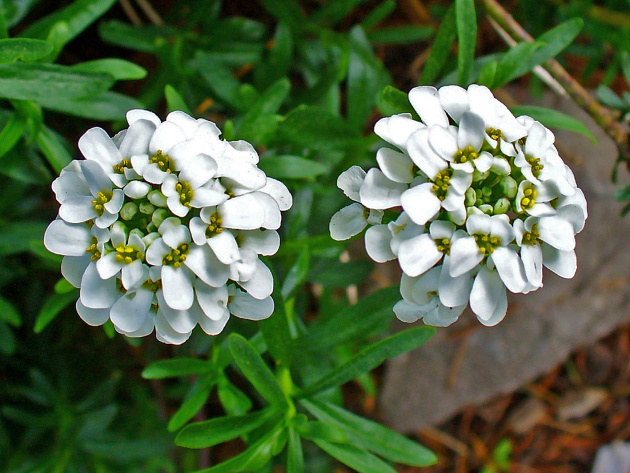
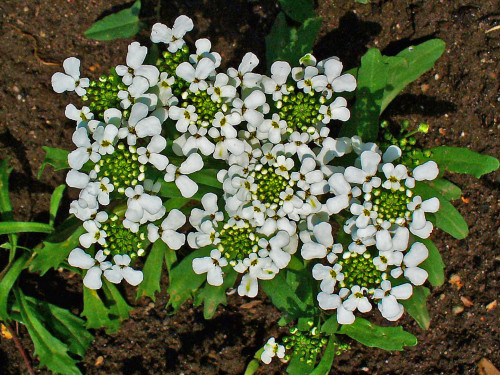

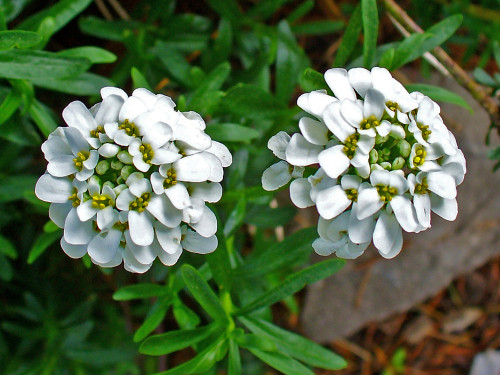
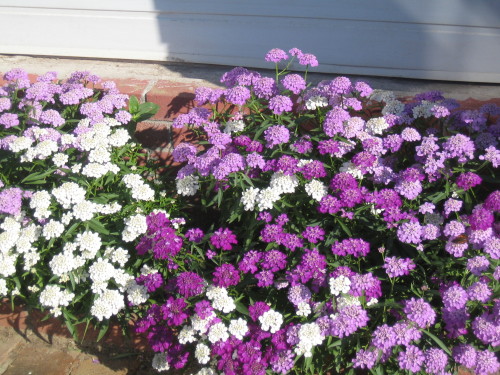

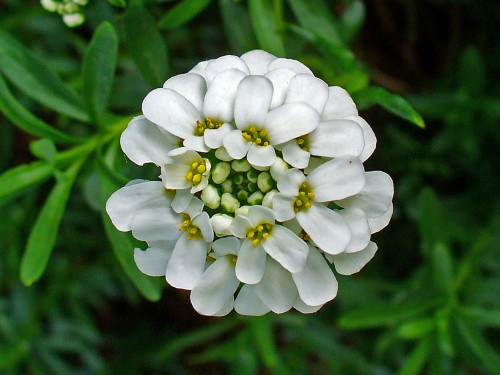
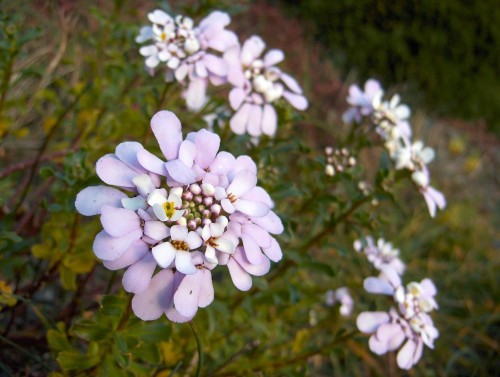

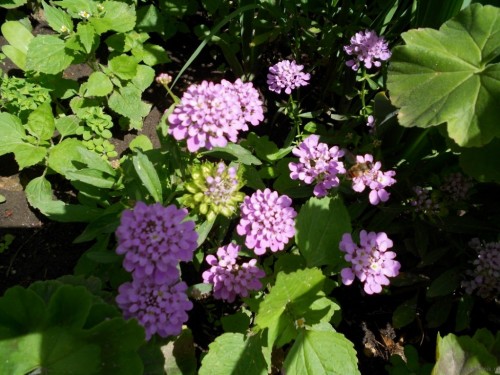
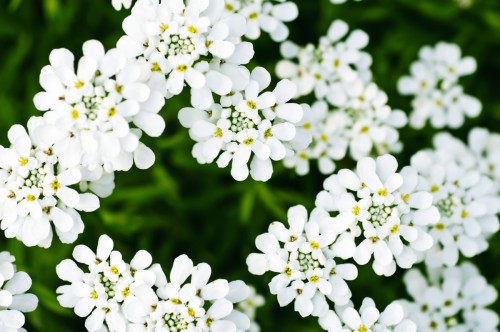












 Start a discussion ...
Start a discussion ...